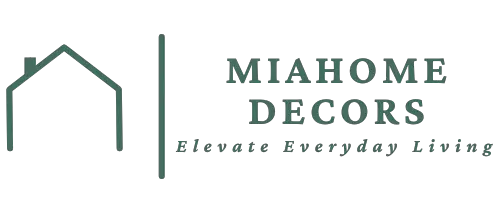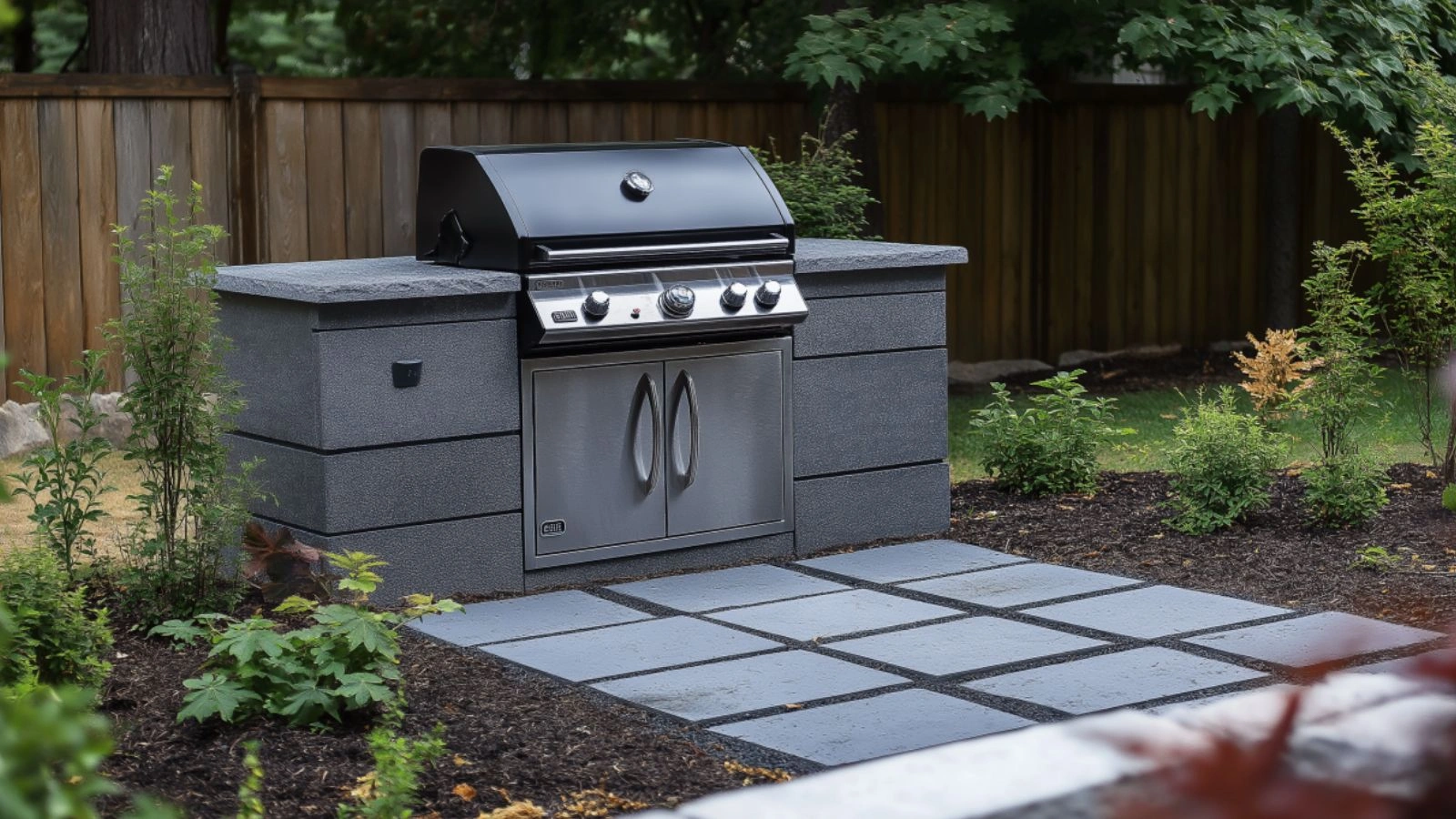Grill Pad Off Patio with Stone Edging for a Clean Look
Table of Contents
A well-designed grill pad can transform your backyard from a simple gathering spot into a polished outdoor cooking oasis. But when grills sit directly on grass or at the edge of a patio without a defined space, they can feel more like an afterthought than a feature. That’s where the idea of a grill pad off the patio with stone edging comes in—a stylish, durable solution that combines practical fire safety with polished curb appeal.
By creating a distinct, structured area for your grill just off the main patio, you add function while keeping the cooking zone separated from the main lounging or dining area. Stone edging acts as a visual and physical barrier, giving the pad a finished look and protecting surrounding lawn or ground cover from grease, heat, and traffic.
In this article, we’ll walk you through how to plan and design a grill pad with stone edging for a clean, intentional outdoor space. We’ll explore layout considerations, material choices, edging options, safety tips, and aesthetic upgrades to help you create a setup that looks as great as it performs. Let’s bring purpose and polish to your grilling station—without overcomplicating the process.
Why Install a Grill Pad Off the Patio?
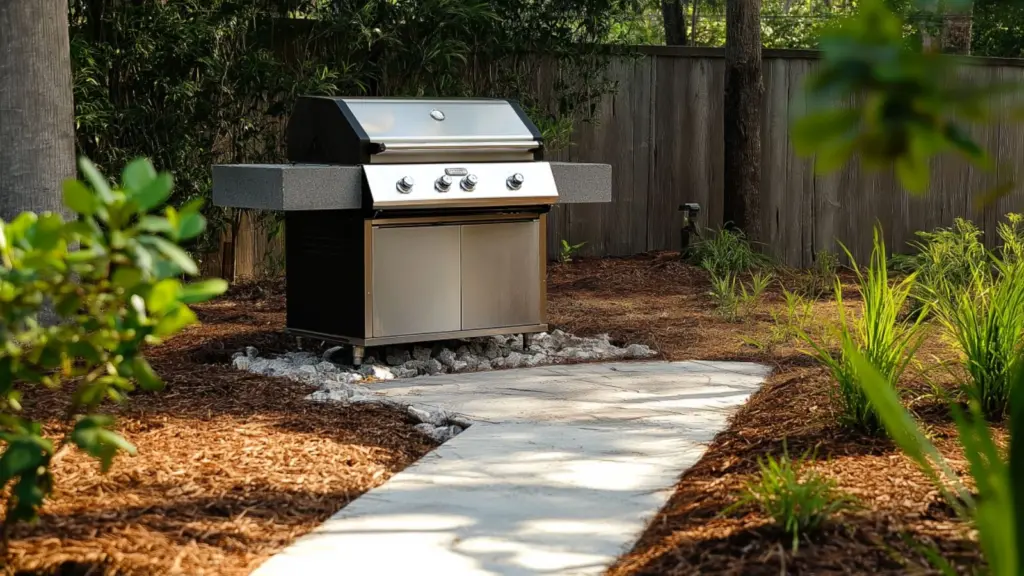
Placing your grill directly on the patio often leads to stains, crowding, and poor airflow. An off-patio grill pad resolves these issues by carving out a dedicated space—both functional and visually appealing.
First and foremost, a grill pad protects surfaces from grease spills and high heat. If your patio is made of wood or composite decking, placing the grill separately helps reduce the risk of damage or even fire. From a design perspective, it also breaks up space effectively, keeping cooking away from dining or lounging areas while still maintaining a natural flow.
Additionally, when you elevate the grill station with stone edging, it creates a clear visual boundary. This touch of structure makes the space feel purposeful, not pieced together.
Visual Breakdown: Benefits of a Grill Pad Off Patio
| Benefit | Description |
|---|---|
| Protects patio surface | Prevents heat damage and staining |
| Adds structure to backyard layout | Separates cooking from relaxation areas |
| Improves safety | Offers better ventilation and reduces fire risk |
| Enhances visual appeal | Clean lines and intentional spacing feel high-end |
Choosing the Right Location for Your Grill Pad
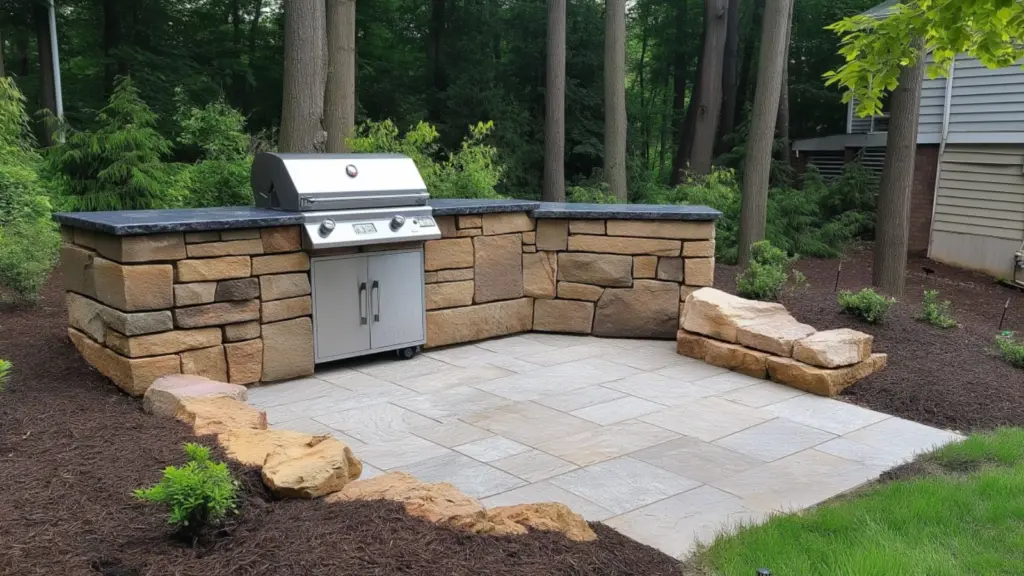
Where you place the grill pad is as important as how you build it. Ideally, it should be close enough to the main patio or kitchen entrance for convenience, but not so close that smoke and heat become a nuisance during meals or gatherings.
Look for a level surface that allows for easy drainage, with enough space to accommodate the grill, side tables, and safe walking clearance. Ensure the area is not directly under trees or awnings unless covered with fireproof material. Also, consider wind direction to minimize smoke blowing back toward the seating area.
Site Planning Checklist:
| Consideration | Details to Review |
|---|---|
| Proximity to patio | Within 3–5 feet is ideal for easy access |
| Drainage slope | Ensure water runs away from patio or home |
| Sun exposure | Avoid full sun if possible for comfort |
| Wind patterns | Position grill downwind from seating zones |
| Safety distance | Maintain 10 feet from structures when possible |
Best Materials for the Grill Pad Surface
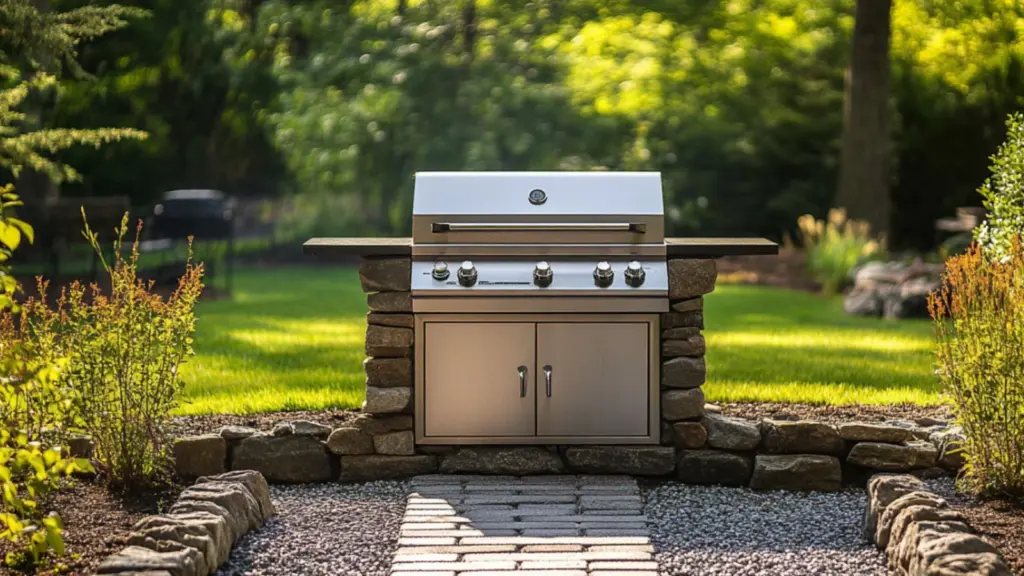
The foundation of your grill pad should be heat-resistant, easy to clean, and blend naturally with your patio’s aesthetic. Popular materials include pavers, concrete slabs, gravel, and decomposed granite—each offering a unique balance of cost, durability, and design.
Concrete pavers are a go-to for their flexibility in layout and color. Gravel and decomposed granite provide a rustic feel, though they require edging to keep clean lines. Avoid wood or synthetic decking directly under grills, as they can degrade over time due to heat and grease.
Grill Pad Material Comparison Table
| Material | Pros | Cons |
|---|---|---|
| Concrete Pavers | Durable, customizable, easy to clean | Slightly more expensive and heavy |
| Decomposed Granite | Natural look, affordable | Requires weed barrier and edging |
| Gravel | Inexpensive, good drainage | Needs frequent raking and maintenance |
| Natural Stone | Aesthetic appeal, high-end | Higher cost, can be uneven without base |
Stone Edging Options to Define the Pad
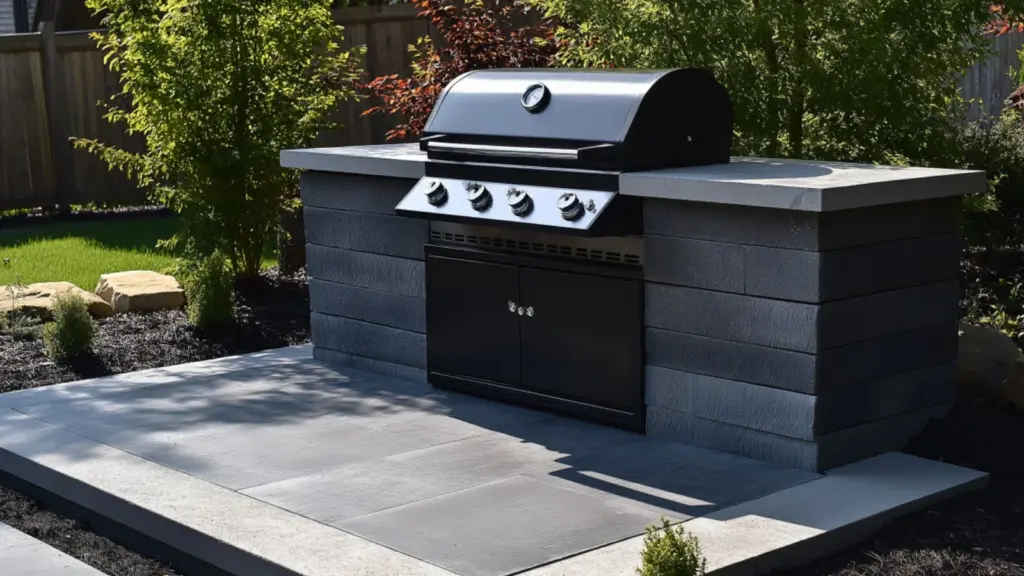
Stone edging is what gives a grill pad its finished, professional look. It not only creates a border that keeps gravel or mulch in place but also adds weight and structure to the space. The best part? You can tailor the edging style to match your home’s overall outdoor aesthetic—rustic, modern, or traditional.
Common edging options include natural stone, stacked flagstone, cobblestone bricks, and preformed concrete edging. Natural stone offers an organic, free-form feel, while bricks and poured concrete curbs provide clean symmetry.
Edging Material Guide: Style and Practicality
| Edging Type | Visual Effect | Best Used With | Maintenance Level |
|---|---|---|---|
| Flagstone | Natural, irregular charm | Decomposed granite | Moderate |
| Cobblestone Bricks | Traditional and structured | Gravel or concrete pavers | Low |
| Concrete Edging | Sleek, modern look | Poured pads or pavers | Very low |
| River Rock Border | Organic and soft | Gravel pads, mulched beds | Occasional reshaping |
Tips for Installation:
- Use landscape adhesive or a shallow trench to keep edging secure.
- Level each stone with a rubber mallet and check elevation frequently.
- Ensure edging rises slightly above the surface to contain material.
Designing the Layout for Function and Style
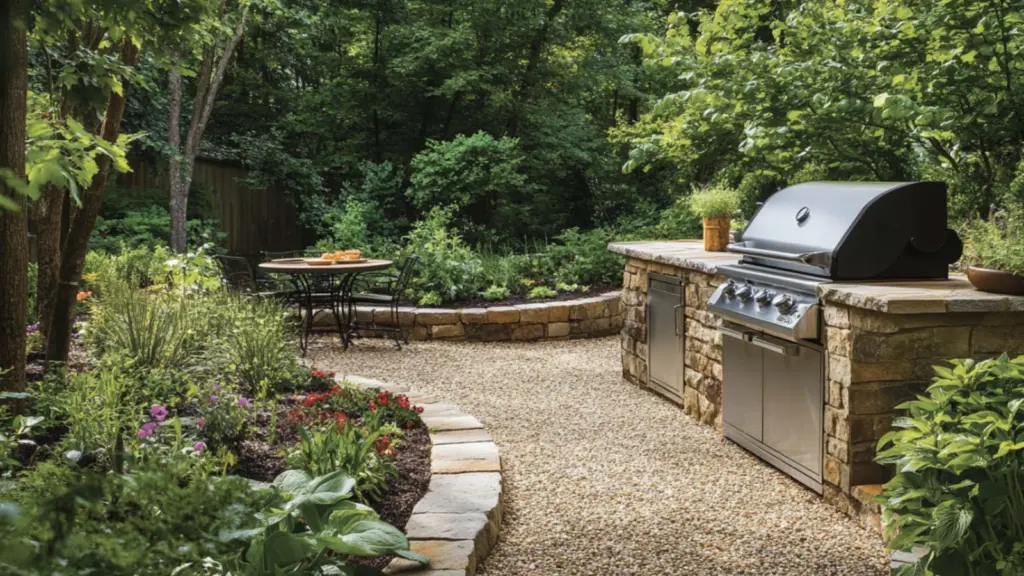
Your grill pad doesn’t have to be a square afterthought—it can become a focal point. Consider the overall layout to improve functionality and complement your landscape. A rectangular layout is perfect for grill carts or gas units, while a circular or curved design softens the hardscape and adds a designer feel.
Include space for side tables, prep stations, or even a small storage box. If using gravel or granite, create a border inside the stone edging with pavers to support the grill’s weight and prevent shifting.
Layout Planning Table: Pad Shape and Use
| Shape | Best For | Visual Benefit |
|---|---|---|
| Rectangle | Grills with side tables or storage | Clean and modern |
| Square | Compact grills or limited yard space | Balanced symmetry |
| Circle | Standalone grills or corner spaces | Softens the look, blends with nature |
| Custom | L-shape or curved with seating nearby | Integrated design with existing patio |
Tips for Flow and Comfort:
- Leave at least 3 feet of clearance around the grill for safety.
- Position pad entry facing the main patio for accessibility.
- Avoid placing seating directly behind the grill where heat escapes.
Complement the Setup with Decorative Elements
Once the structure is in place, elevate your grilling station with decor and accessories that unify the look. Consider adding a small pergola or trellis for overhead structure and style. A weatherproof rug, lantern lighting, or even a hanging herb garden nearby can transform the grill area into an inviting focal point.
Use natural materials like teak, cedar, or metal to maintain visual cohesion with the grill and stone. Store tools in decorative containers or hang them on hooks for easy access. Planter boxes with rosemary, basil, or lavender serve both a visual and culinary purpose.
Visual Table: Grill Pad Decorative Ideas
| Element | Purpose | Styling Tip |
|---|---|---|
| Overhead pergola | Adds shade and vertical interest | Use climbing vines for natural cover |
| Decorative lighting | Functional ambiance | Solar lanterns or string lights |
| Herb planters | Edible beauty and aroma | Group in threes for cohesion |
| Grill tool station | Keeps essentials tidy | Use wall-mounted hooks or baskets |
Conclusion
A grill pad off the patio with stone edging is more than a backyard upgrade—it’s a functional design choice that brings structure, safety, and style to your outdoor living space. By choosing durable materials, defining your layout with thoughtful stone edging, and adding finishing touches like lighting or planters, you create a dedicated cooking zone that feels polished and permanent.
Whether you’re working with a small patio or a sprawling yard, this setup offers a clean, defined look that blends utility with aesthetic appeal. And best of all, it enhances your outdoor experience—making it easier and more enjoyable to gather, cook, and relax outside.
